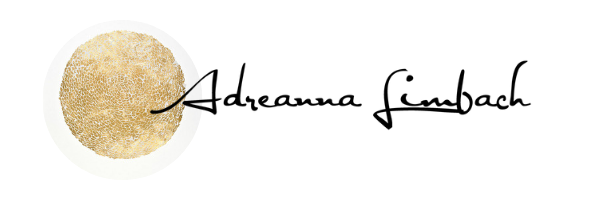My mom is the kind of mom who receives messages from the Universe.
This sounds a little "woo woo", I know.
However, she speaks about it as Eastern philosophers speak of contemplation practices, or Judeo-Christians speak of prayer, holding a question or thought in mind until she receives a response, or spark of insight.
Often this happens spontaneously, when her mind is relaxed with other activities, and sometimes the messages are for me.
One evening during a very dark winter she called me up with just such a message. It was on the heels of botching something that was extremely important to me. I had planned it all month, certain I would receive accolades, praise, and tiny yellow tea roses thrown at my feet for being a quiet genius, revealed.
Instead, I had a panic attack. Full out. Breathless, body quakes, phlegmy tears rolling down my chin while a circle of my peers watched me unfold.
Aka: The worst.
In a fit of humiliation, I had self-quarantined in my bedroom for the remainder of the weekend, hoping my bedsheets would swallow me whole, cocoon and transform me, eventually releasing me reborn on the beaches of Bali in June.
This didn't happen.
Instead, my mom called.
"The Universe has a message for you... It's 'Humility.'"
OH. REALLY.
I received this "offering" the same way as I would if the Universe had a message for me: "You've let yourself go since high school", or, if the Universe had a message for me: "Your face is too round for that new haircut."
It seemed like a celestial-padded jab from my mother.
NOT what I wanted to hear.
But as we know, our needs and our wants are distinctly different devices.
So I did what any wallowing word-nerd would do, which is find the definition of "Humility" on Wiki, looking for even more reasons to be injured by this insult.
Humility. (n) Close to the Earth, grounded, right sized.
It took a bit of contemplating (and a bit more wallowing), but eventually, I got it.
My expectations of myself and my performance had been so inflated, so dependent on grandiose standards, and my desire to be praised, that I collapsed when it didn't play out as desired.
Perfectionism in drag. Disproportionate thinking. The gap between expectation and a reality sandwich can be brutal.
One of the finest antidotes is staying right sized.
----------
3 Practices for Staying Right Sized
1::Drop Expectations, Embrace Intentions.
Desire is the root of all action, but the intention we approach our desires with can be the linchpin difference between staying stuck, beating ourselves up afterwards, or shaking off slights and moving forward with personal permission.
Is our reason for acting dependent on the outcome? Is it because we expect to change someone, be received a certain way, or to get something in return?
Motivation that's dependent on outcomes that we can't control is the best recipe for staying in a perfectionist "freeze", or falling apart in the after wash.
Rather, ask yourself "How do I want to participate in this? With compassion? Honesty? Dedication? Humor?" We can control how we 'show up', and honoring our intentions vs expectations keeps us right sized, and confident in our abilities; regardless of how the situation plays out.
2:: When in doubt, Generosity trumps all.
Humility doesn't mean thinking less of yourself, it means thinking of yourself less.
The concern that I hear most often from clients is some variation of: "What if I look silly?" or "What if they think I'm a fraud/chump/total loser" or "What if I make the wrong decision?"
I've felt every one of these anxieties nestled in the pit of my stomach at some point, and the one thing that they all have in common, is that the anxiety lens is intently focused on ME.
As my teacher, Venerable Robina Courtin so divinely put it: "We're so wrapped up in what other people think of us. It's a fucking nightmare."
I really like ordained nuns that drop F* bombs. I also think she's spot on.
Peeling our attention off of ourselves and how we'll be perceived, while pinning it to what we want to contribute, offer, and create for the sake of others is the most effective way that I've found to navigate the tides of inflated/deflated thinking.
When we do something for others, we organically drop into our right size.
3. Revel in Enoughness
Abundance is sexy. I get it.
The idea of living the luxe life, and chasing the dream of "having more and being more" is super seductive and ingrained in our cultural mythology. However, it also leaves us unsatisfied and unaware of what we have sitting right in front of us.
When we're prone to inflating who we are in the world with every new compliment/promotion/win/shiny thing, and deflating with every disappointment/discouragement/challenge/loss, our sense of self worth is always in flux.
As Alice said to the Caterpillar in Wonderland, "I'm not myself, you see...being so many different sizes in a day is very confusing.".
You said it, sister. And it's exhausting. Being right sized means being able to inhabit what we have right here right now, appreciate that it's not perfect, and admire that it's "enough".
Ourselves included.












